 2010 Nissan Qashqai+2 I (NJ10, facelift 2010) Dimensions, Size & Specs
2010 Nissan Qashqai+2 I (NJ10, facelift 2010) Dimensions, Size & SpecsMeasurements of the 2010 Nissan Qashqai+2 I, engineered for optimal performance and comfort
| Dimensions | |
|---|---|
| Length: | 4541 mm178.8 in14.9 ft |
| Width: | 1780 mm70.1 in5.8 ft |
| Height: | 1645 mm64.8 in5.4 ft |
| Trunk Capacity: | 130 liter4.6 cu ft |
| Trunk Capacity (Max): | 1520 liter53.7 cu ft |
| Weight Specifications | |
| Curb Weight: | 1404-1732 kg3095-3818 lbs |
| Maximal permitted Weight: | 2072-2356 kg4568-5194 lbs |
| Tire Specifications | |
| Rims Sizes: | 16-inch rims:
|
| Tire Sizes: |
|
The Nissan Qashqai+2 I (NJ10 facelift 2010) marks an extended version of Nissan's popular compact SUV, produced from 2010 to 2014. Designed to offer enhanced versatility and space, this generation features a length of 4541 mm (178.7 inches), a width of 1780 mm (70.1 inches), and a height of 1645 mm (64.8 inches), making it slightly larger than the standard Qashqai. Weighing between 1404 kg and 1732 kg (3097 to 3819 lbs) in curb weight, the vehicle supports a maximum weight ranging from 2072 kg to 2356 kg (4568 to 5195 lbs), reflecting its capacity for additional passengers and cargo. One of the standout features of the Qashqai+2 I is its flexible luggage compartment. While the boot space measures a modest 130 liters with all seats in place, folding the rear seats expands the luggage capacity substantially to 1520 liters (53.7 cubic feet), making it practical for larger loads or family trips. The vehicle comes equipped with a variety of rim size options including 16, 17, and 18 inches with tire sizes ranging from 215/65 R16 to 215/55 R18, contributing to a balance of comfort and handling performance typical of an urban SUV. This generation of the Nissan Qashqai+2 caters to drivers seeking a compact yet roomy SUV with a flexible interior layout and balanced driving dynamics, ideal for families or those needing extra space without stepping into a full-size SUV.
Discover the standout features that make the 2010 Nissan Qashqai+2 I a leader in its class
Have a question? Please check our knowledgebase first.
The 2010 Nissan Qashqai+2 I facelift model measures 4541 mm (178.7 inches) in length, 1780 mm (70.1 inches) in width, and stands 1645 mm (64.8 inches) tall. These dimensions place it firmly in the compact SUV segment with extended length compared to the standard Qashqai, thanks to the additional two seats, offering a balance between maneuverability and spaciousness suitable for families requiring more seating without upgrading to a larger SUV.
The curb weight of the Nissan Qashqai+2 I facelift ranges from 1404 to 1732 kg (approx. 3096 to 3819 lbs), depending on the chosen trim and options. The maximum weight, which includes passengers and cargo, ranges between 2072 and 2356 kg (4567 to 5194 lbs). The heavier weight compared to the standard Qashqai model slightly impacts acceleration and fuel economy but also contributes to increased stability on the road. The additional weight from the larger body and extended seating capacity means this model may consume more fuel compared to its lighter predecessor, but this tradeoff is balanced by its spaciousness and versatility.
With all seven seats in use, the Nissan Qashqai+2 I (facelift 2010) offers a modest luggage capacity of 130 liters (4.6 cubic feet), which is enough for light cargo or small luggage. When the rear seats are folded down, the load space expands significantly to 1520 liters (53.7 cubic feet), providing a large flat area for transporting bulky items. This flexibility in cargo space makes it practical for families or users who need occasional extra room without upgrading to a full-size SUV.
The 2010 Nissan Qashqai+2 facelift comes with several rim options: 6.5J x 16, 6.5J x 17, and 6.5J x 18 inches. Corresponding tire sizes include 215/65 R16, 215/60 R17, and 215/55 R18. Larger rims and lower profile tires, such as the 18-inch with 215/55 tires, offer improved handling and a sportier appearance but may slightly reduce ride comfort compared to the 16-inch setup, which provides a softer ride and better absorption of road imperfections. Choosing the right combination depends on driver preference for comfort vs. sharper handling.
The Qashqai+2 I facelift (2010–2014) is notably longer than the original Qashqai I, measuring 4541 mm (178.7 inches) compared to the standard Qashqai's approximate 4295 mm (169 inches) length, primarily due to the added third row of seats. Width (1780 mm / 70.1 inches) and height (1645 mm / 64.8 inches) remain similar to the standard Qashqai, preserving its compact SUV feel. The increased length in the Qashqai+2 allows extra passenger capacity but also slightly changes the vehicle's maneuverability and parking dimensions.
Yes, the Nissan Qashqai+2 I facelift, with dimensions of 4541 mm length, 1780 mm width, and 1645 mm height (178.7 x 70.1 x 64.8 inches), generally fits comfortably within standard residential garages. A typical single-car garage offers internal dimensions around 6 meters (20 feet) in length and 3 meters (10 feet) in width, providing enough space for this model with room to open doors and maneuver. However, garage sizes vary, so owners should confirm exact garage measurements before parking the vehicle inside.
Compared to other compact seven-seat SUVs like the Volkswagen Tiguan with an optional third row or the Ford Kuga with 7-seat configuration, the Nissan Qashqai+2 I facelift is competitive in dimensions, with a length of 4541 mm (178.7 inches) positioning it towards the longer end of its class. Its luggage capacity, especially with folded seats (1520 liters/53.7 cubic feet), is generous compared to some rivals, which often have tighter cargo spaces. While not as luxurious as some offerings, the Qashqai+2 prioritizes practicality, affordability, and versatility, making it a strong contender in the compact 7-seat SUV segment.
The Qashqai+2 I facelift measures 1780 mm (70.1 inches) in width and 1645 mm (64.8 inches) in height. These dimensions provide a roomy cabin environment with ample shoulder room for passengers, while the height offers a commanding driving position typical of SUVs. The width helps enhance stability on the road and facilitates better handling. Compared to narrower compact SUVs, this width also improves comfort for passengers seated side-by-side, including in the third row.
The Nissan Qashqai+2 I facelift has a curb weight ranging from 1404 to 1732 kg (3096 to 3819 lbs), depending on version and equipment. The variation in weight impacts acceleration, braking, and fuel consumption. Heavier versions offer a more planted feel and increased ride comfort due to their mass, but are generally less responsive and consume more fuel. Lighter variants will feel more agile but may compromise slightly on road comfort. Overall, the weight balance of the Qashqai+2 supports its role as a family-friendly SUV balancing performance and comfort.
The maximum weight (gross vehicle weight rating) of the Nissan Qashqai+2 I facelift ranges from 2072 to 2356 kg (4567 to 5194 lbs), which includes the vehicle, passengers, cargo, and any additional load. This high maximum weight rating enables the vehicle to carry up to seven passengers comfortably along with their luggage, within safe limits defined by the manufacturer. It ensures structural safety, braking capabilities, and suspension performance remain intact even when the vehicle is fully loaded.
Discover similar sized cars.
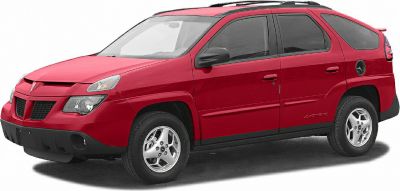
| Production: | 2000-2005 |
|---|---|
| Model Year: | 2001 |
| Length: | 4585 mm180.5 in |
| Width: | 1872 mm73.7 in |
| Height: | 1702 mm67.0 in |
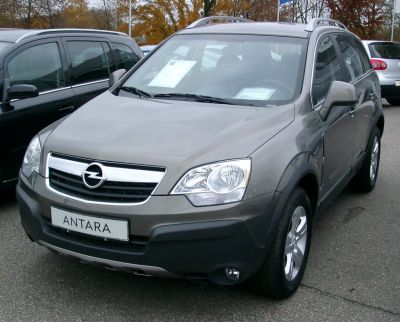
| Production: | 2006-2010 |
|---|---|
| Model Year: | 2007 |
| Length: | 4575 mm180.1 in |
| Width: | 1850 mm72.8 in |
| Height: | 1704 mm67.1 in |

| Production: | 2008-2010 |
|---|---|
| Model Year: | 2008 |
| Length: | 4530 mm178.3 in |
| Width: | 1780 mm70.1 in |
| Height: | 1645 mm64.8 in |
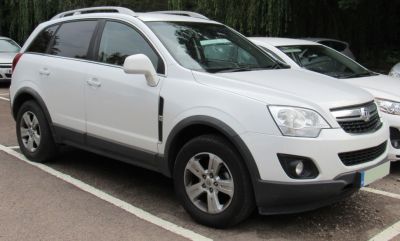
| Production: | 2010-2015 |
|---|---|
| Model Year: | 2010 |
| Length: | 4596 mm180.9 in |
| Width: | 1850 mm72.8 in |
| Height: | 1717 mm67.6 in |
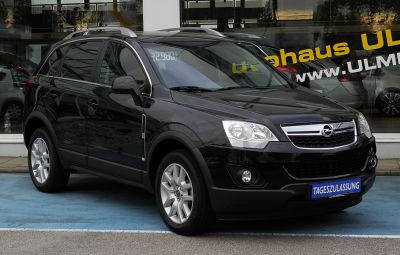
| Production: | 2010-2016 |
|---|---|
| Model Year: | 2011 |
| Length: | 4575-4596 mm180.1-180.9 in |
| Width: | 1850 mm72.8 in |
| Height: | 1704-1761 mm67.1-69.3 in |

| Production: | 2011-2015 |
|---|---|
| Model Year: | 2012 |
| Length: | 4529-4570 mm178.3-179.9 in |
| Width: | 1820 mm71.7 in |
| Height: | 1643-1685 mm64.7-66.3 in |
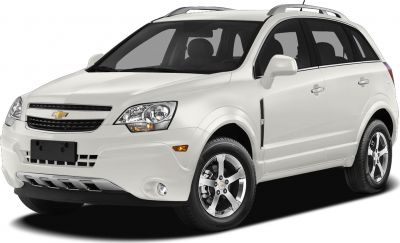
| Production: | 2013-2014 |
|---|---|
| Model Year: | 2013 |
| Length: | 4575-4673 mm180.1-184.0 in |
| Width: | 1849-1868 mm72.8-73.5 in |
| Height: | 1702-1756 mm67.0-69.1 in |

| Production: | 2015-2018 |
|---|---|
| Model Year: | 2016 |
| Length: | 4605-4661 mm181.3-183.5 in |
| Width: | 1845 mm72.6 in |
| Height: | 1675-1704 mm65.9-67.1 in |
